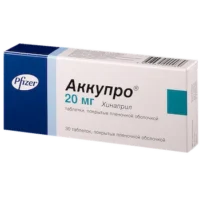Description
Nalbufin Solution for Injections 10 mg/ml. 1ml. Ampoules №10
Ingredients
- Nalbufin solution for injections contains 10 mg/ml of Nalbuphine hydrochloride as the active ingredient.
- Other ingredients may include sodium chloride, hydrochloric acid, and water for injection.
Dosage
The recommended dosage of Nalbufin solution for injections is determined by a healthcare provider based on the patient’s condition, age, and medical history. It is typically administered intramuscularly or intravenously.
Indications
Nalbufin solution is indicated for the relief of moderate to severe pain. It is often used as an analgesic during labor, postoperative pain management, and in situations where opioid analgesia is required.
Contraindications
Do not use Nalbufin solution if the patient has a known hypersensitivity to Nalbuphine or any of the other ingredients. It should also be avoided in patients with respiratory depression, acute alcoholism, or head injuries.
Directions
Administer Nalbufin solution as directed by a healthcare professional. The injection site should be clean and rotated to prevent irritation. Monitor the patient for any adverse reactions during and after administration.
Scientific Evidence
Nalbufin, a mixed opioid agonist-antagonist, has shown efficacy in managing pain with a lower risk of respiratory depression compared to pure opioid agonists. Studies have demonstrated its effectiveness in various pain conditions, making it a valuable option in pain management protocols.
Additional Information
- Nalbufin solution for injections offers a balanced analgesic effect by acting on different opioid receptors in the body.
- Its unique pharmacological profile provides pain relief while minimizing the potential for abuse and dependence compared to traditional opioids.
- Clinical trials have highlighted its role in achieving adequate pain control with fewer side effects, making it a versatile choice in pain management strategies.





